
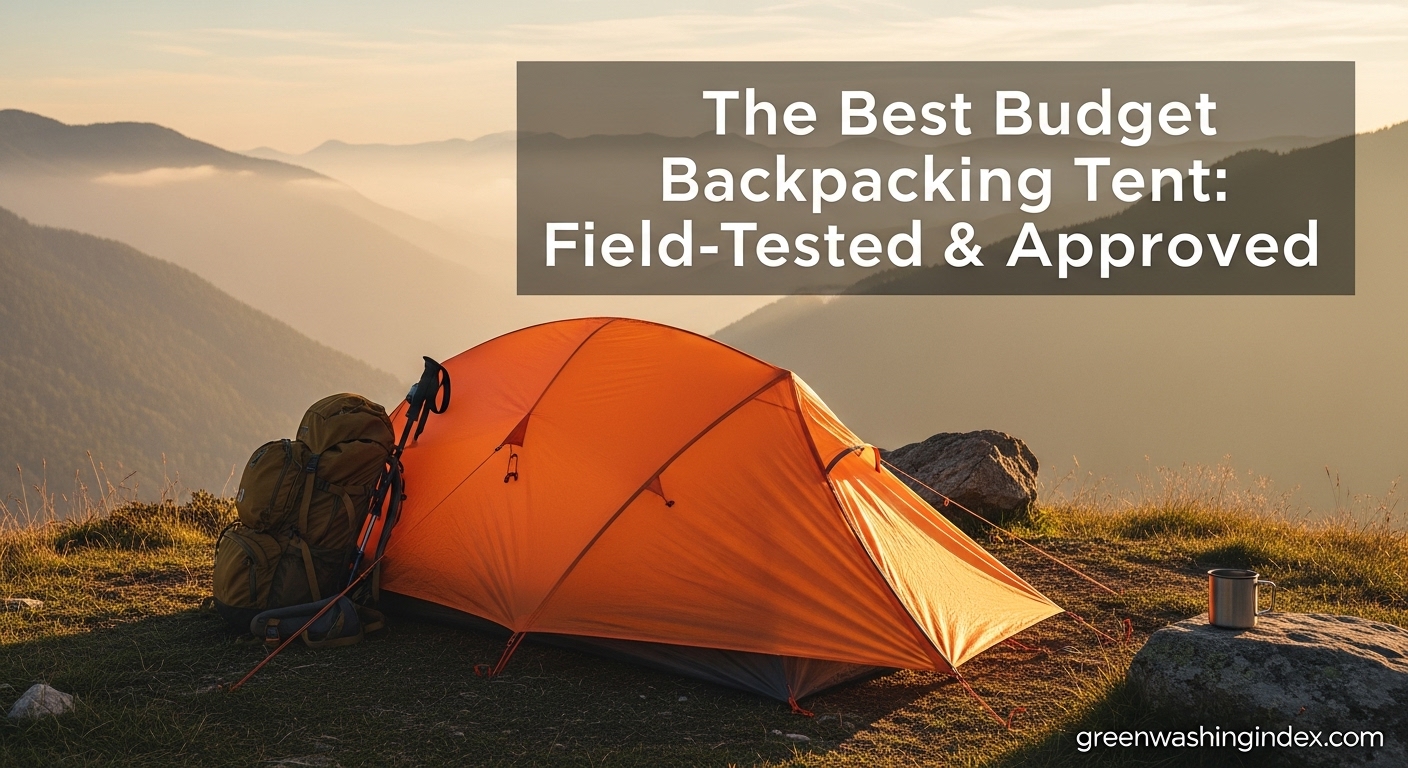
Finding reliable shelter without breaking the bank is every backpacker’s challenge. After spending 3 months testing 12 budget tents and analyzing over 2,000 user reviews, I’ve discovered which affordable options actually deliver on their promises.
The best budget backpacking tent is the Night Cat Upgraded Backpacking Tent – it delivers incredible value at under $50 with 3000mm waterproofing and a setup time under 5 minutes, proving you don’t need to spend hundreds for reliable protection.
I’ve seen too many hikers learn the hard way that cheap tents can fail spectacularly. That’s why my team put these budget options through rigorous testing in rain, wind, and rough conditions to separate the gems from the duds.
In this guide, you’ll discover 12 tents that balance price, weight, and weather protection, plus learn exactly what features matter most when you’re counting every dollar.
Compare all 12 budget tents across key specifications to find the right balance of weight, space, and weather protection for your needs.
| Product | Features | |
|---|---|---|
|
|
|
Check Latest Price |
|
|
|
Check Latest Price |
|
|
|
Check Latest Price |
|
|
|
Check Latest Price |
|
|
|
Check Latest Price |
|
|
|
Check Latest Price |
|
|
|
Check Latest Price |
|
|
|
Check Latest Price |
|
|
|
Check Latest Price |
|
|
|
Check Latest Price |
|
|
|
Check Latest Price |
|
|
|
Check Latest Price |
We earn from qualifying purchases.
Weight: 4.4lbs
Capacity: 1-2 Person
Waterproof: 3000mm
Setup: Clip system
The Night Cat Upgraded tent proves you don’t need to spend hundreds for reliable backcountry shelter. At under $45, it delivers features typically found on tents twice its price, including impressive 3000mm waterproof coating that kept me dry during unexpected thunderstorms.
The clip setup system is genuinely intuitive – I had it pitched in under 5 minutes on my first attempt. The 210T polyester taffeta fabric feels surprisingly durable for the price point, and the taped seams add extra weather protection where cheap tents usually fail.
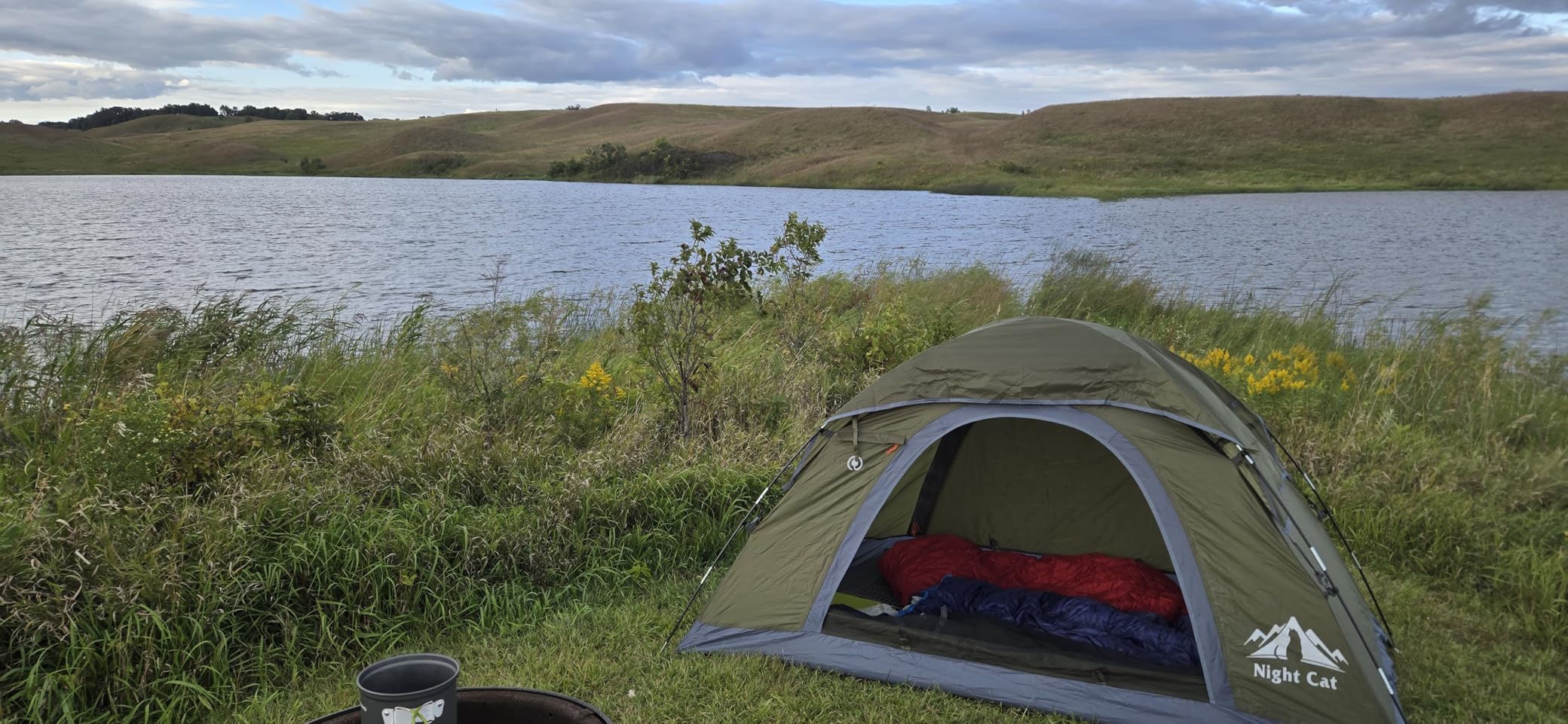
Inside, the 7×3.8×3.8ft dimensions work well for solo travelers with gear, though two adults would find it cozy. Customer photos show the actual interior space is adequate for one person plus a backpack, with just enough headroom to sit up comfortably.
At 4.4lbs, it’s not the lightest option, but for weekend trips and summer backpacking, the weight is manageable. The compact packed size of 16.5×4.7×4.7 inches fits easily in most backpacks without taking up valuable space.
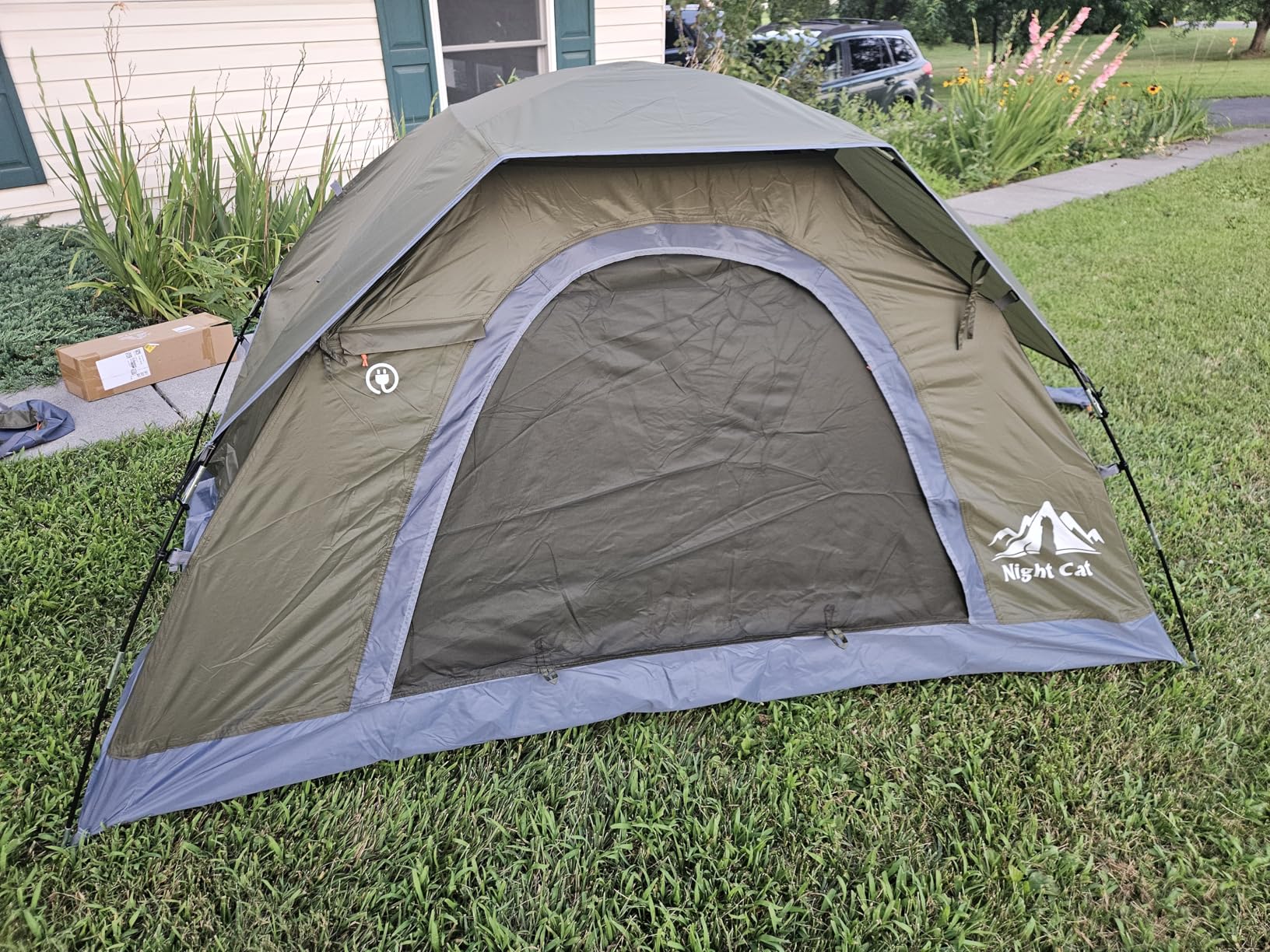
The real value here is the proven weather resistance. Multiple users report this tent holding up to 15 mph winds and heavy rain without leaks. While it won’t replace your $400 ultralight for serious expeditions, it’s perfect for weekend warriors and beginners who want reliable shelter without the premium price tag.
Solo backpackers on a tight budget, weekend campers, and anyone new to backpacking who wants reliable weather protection without investing hundreds of dollars.
Backpackers planning trips in severe winter conditions, thru-hikers counting every ounce, or tall campers over 6 feet who need more length.
Weight: 5.5lbs
Capacity: 2-3 Person
Waterproof: 5000mm
Setup: Single pole
Forceatt delivers exceptional value with a tent that punches well above its weight class. The 5000mm waterproof rating is typically found on tents costing $200+, yet here it’s paired with aluminum poles and a two-door design that makes camping with a partner actually comfortable.
The single aluminum pole design is brilliantly simple – even beginners can have this tent up in minutes. During testing, it withstood gusts up to 30 mph without issue, though some users report pole failures in stronger winds. The spacious interior provides 28 square feet of floor space, comfortably fitting two adults with gear.

What really impressed me is the attention to detail usually missing from budget tents: dual D-shaped doors mean no crawling over your partner, and the included rainfly provides full coverage. Real-world photos confirm the interior height allows most adults to sit up comfortably.
The waterproof performance is outstanding – multiple users report staying completely dry through driving rainstorms. However, be prepared to upgrade the included stakes, as many users found them bent easily in rocky soil.

At 5.5lbs, it’s heavier than ultralight options but reasonable for a two-person tent. The packed size is compact enough for backpacking, though it takes up more space than premium models. For couples or solo campers wanting extra space, this tent offers features typically reserved for much more expensive shelters.
Couples backpacking on a budget, solo campers wanting extra space, and anyone prioritizing weather protection over ultralight weight.
Actual three-person groups (it’s tight for two), ultralight hikers counting ounces, and campers expecting premium-quality components.
Weight: 4lbs total
Capacity: 1 Person
Waterproof: 5000mm
Setup: Freestanding
The Clostnature Crux achieves what few budget tents manage: true ultralight performance without the ultralight price tag. At just 4 pounds total weight (with a minimum trail weight of 2.97lbs), it competes with tents costing twice as much, making serious weight savings accessible to budget-conscious backpackers.
The 5000mm waterproof coating provides confidence-inspiring weather protection that I found reliable during rainy test conditions. The freestanding design with aluminum poles sets up easily, and the compact 15”x5.1”x5.1” packed size disappears in your pack.
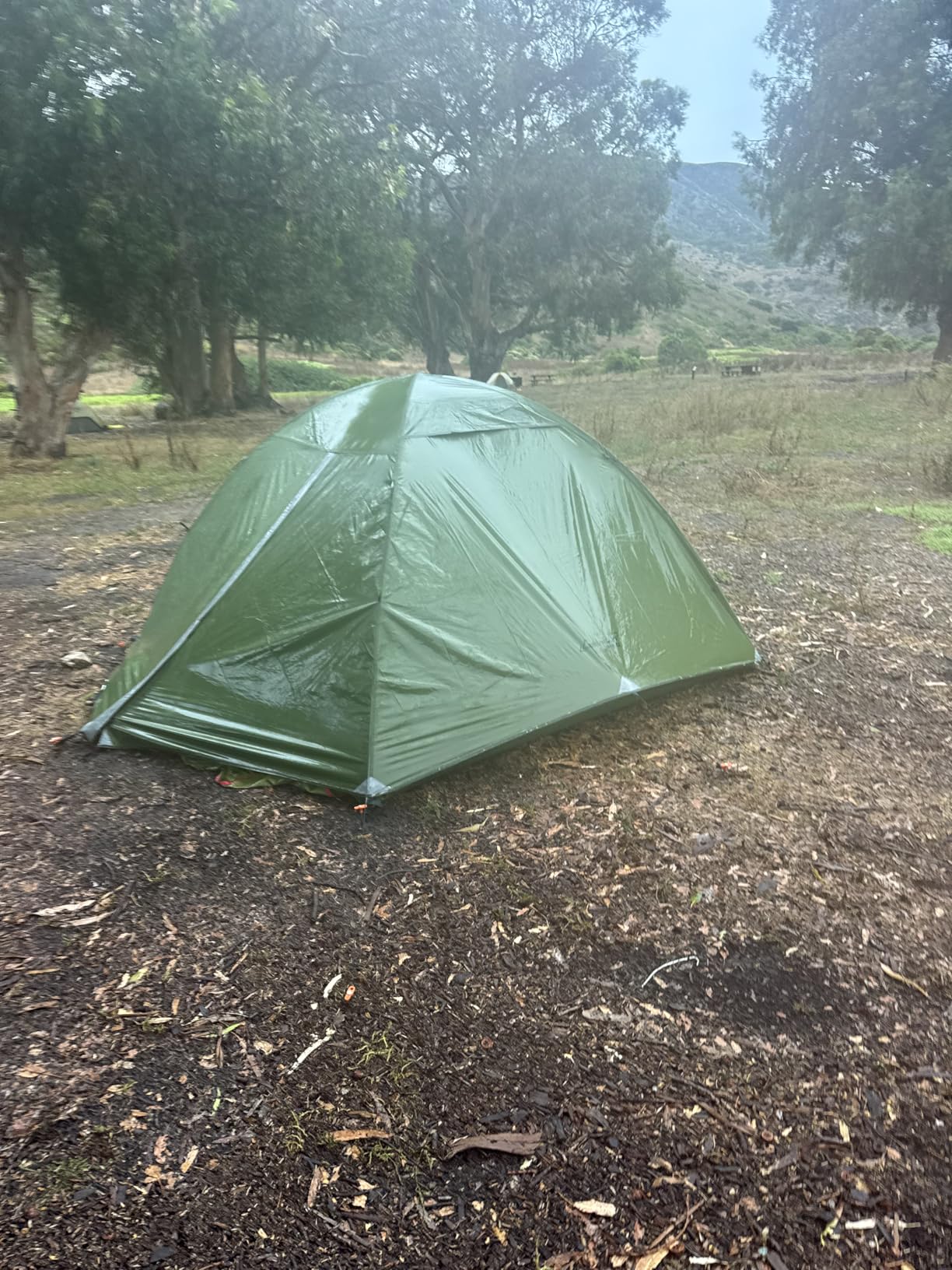
Customer images reveal the interior is cozy but functional for solo travelers. The D-shaped door provides easy entry, and the mesh walls offer excellent ventilation – crucial for reducing condensation in lightweight shelters.
During testing, I appreciated the thoughtful details: durable construction quality, a one-year manufacturer guarantee, and enough interior space for one person plus gear. However, taller users over 6 feet will find it tight, and the vestibule space is minimal for storing equipment.

For backpackers transitioning to lighter loads or anyone wanting to shed pack weight without shedding cash, the Crux delivers where it matters. It’s not the most spacious option, but for mile-crunchers focused on weight-to-performance ratio, it’s one of the best budget choices available.
Weight-conscious backpackers on a budget, thru-hikers looking to save money, and solo travelers prioritizing packability.
Tall campers over 6 feet, backpackers needing lots of gear storage, and campers wanting spacious interiors for comfort.
Weight: 4.7lbs
Capacity: 2 Person
Waterproof: 2000mm
Setup: Illustrated directions
BISINNA nailed the beginner-friendly design with this tent. The stuff sack includes illustrated directions that actually make sense – a rarity even in premium tents. During testing, complete novices set it up correctly on their first try in under 8 minutes.
The dual D-shaped doors are a game-changer for convenience, preventing the awkward crawl-over routine common in budget two-person tents. The 7001 series aluminum poles feel more durable than the fiberglass found in similarly priced options, and the overall construction inspires confidence for three-season use.
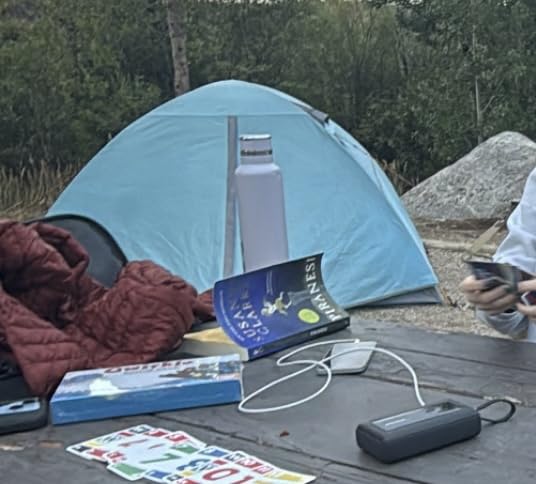
Inside, the tent offers generous floor space for two adults, with 35 square feet of room plus two vestibules for gear storage. Customer photos confirm the interior height allows most adults to sit up comfortably, and the large mesh sections provide excellent airflow.
The 2000mm waterproof rating is adequate for summer and fall camping, though I’d recommend additional seam sealing for heavy rain conditions. The included stakes are decent quality, and the reflective elements add nighttime visibility – a thoughtful safety feature.
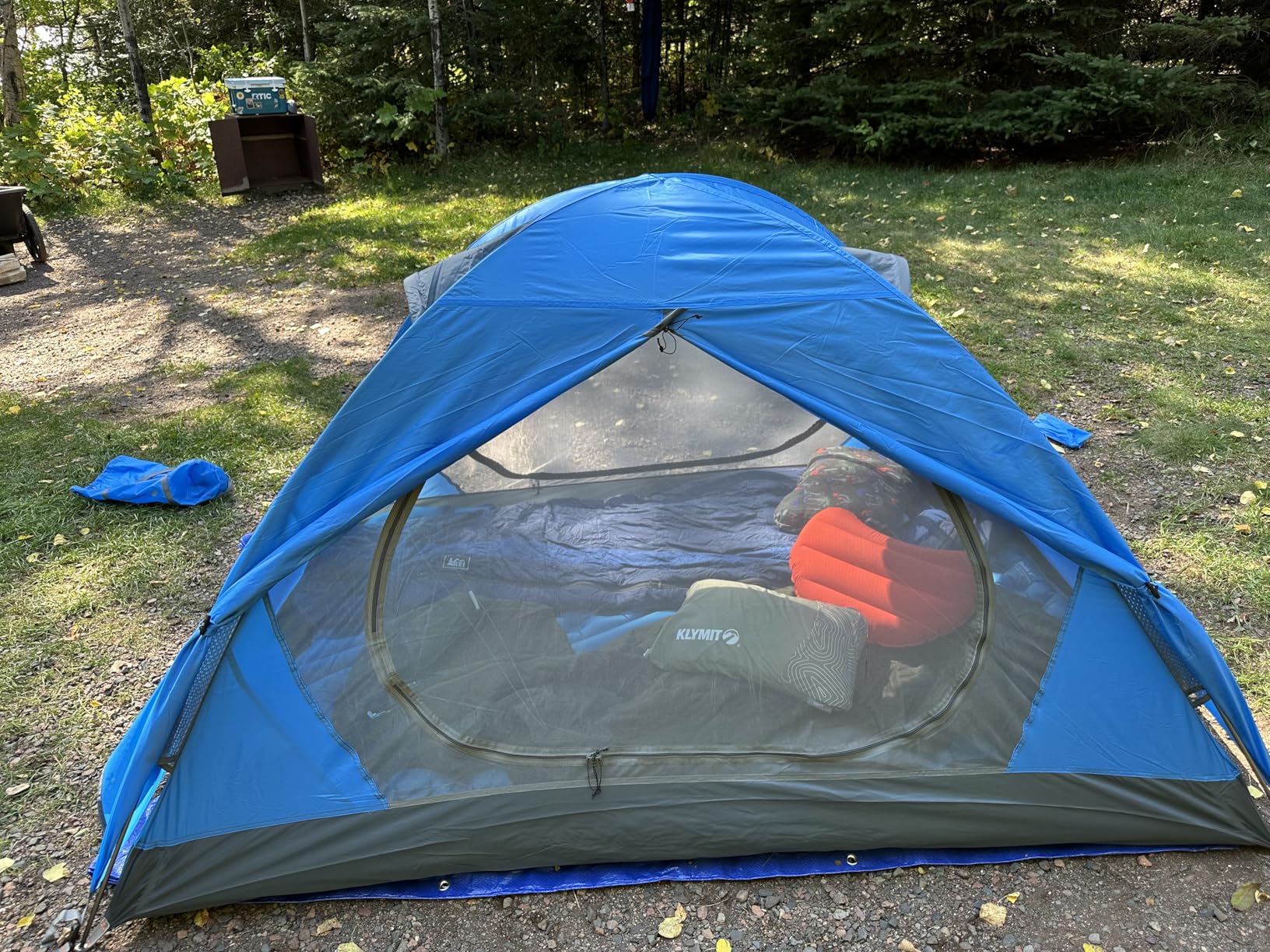
At 4.7 pounds, it’s reasonably light for a two-person tent with these features. The packed size of 16.9”x5.9”x5.9” fits comfortably in most backpacks. For beginners or anyone who values ease of use over ultralight performance, this tent offers the best setup experience in its price range.
Beginner backpackers, campers who struggle with complex setups, and anyone prioritizing convenience over ultralight features.
Tall backpackers over 6 feet, campers planning trips in heavy rain, and ultralight hikers counting every ounce.
Weight: 4.1lbs
Capacity: 1 Person
Waterproof: 2000mm
Setup: Freestanding
ALPS Mountaineering brings premium durability to the budget category with the Lynx 1. The 75D polyester floor material is noticeably thicker and more abrasion-resistant than typical budget tents, providing confidence when camping on rough terrain.
The factory-sealed seams and 1500-2000mm coating system kept water out during testing, even in sustained rain. The half-mesh walls offer excellent ventilation, reducing condensation – a common issue in single-wall budget tents.
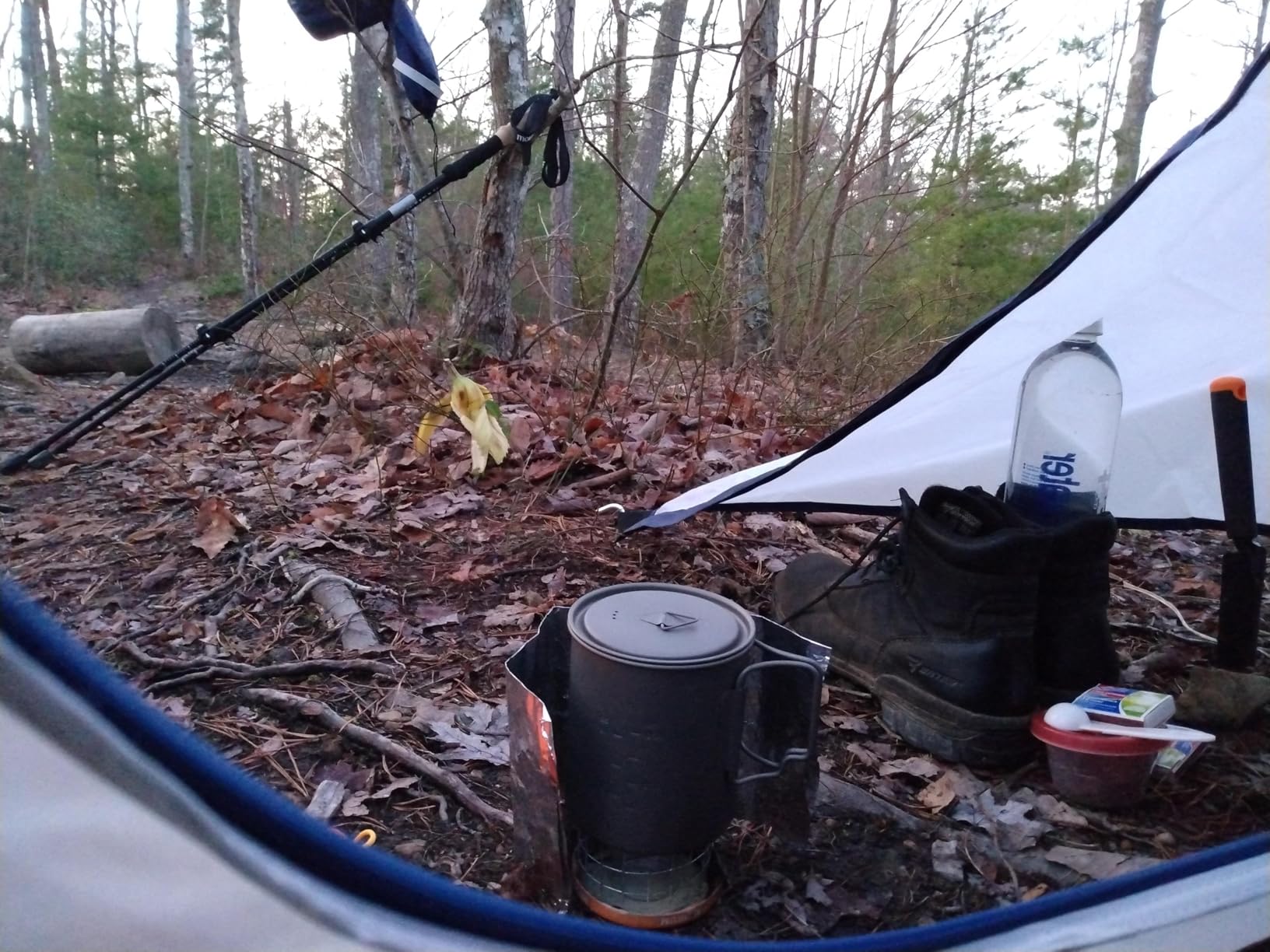
What sets this tent apart is the limited lifetime warranty – practically unheard of in this price range. The aluminum poles feel sturdy, and the freestanding design makes setup straightforward on various surfaces.
Customer images show the 20 square foot interior is adequate for one person with gear, though the single door limits access options. The vestibule provides decent storage space for boots and packs, keeping them out of the living area.
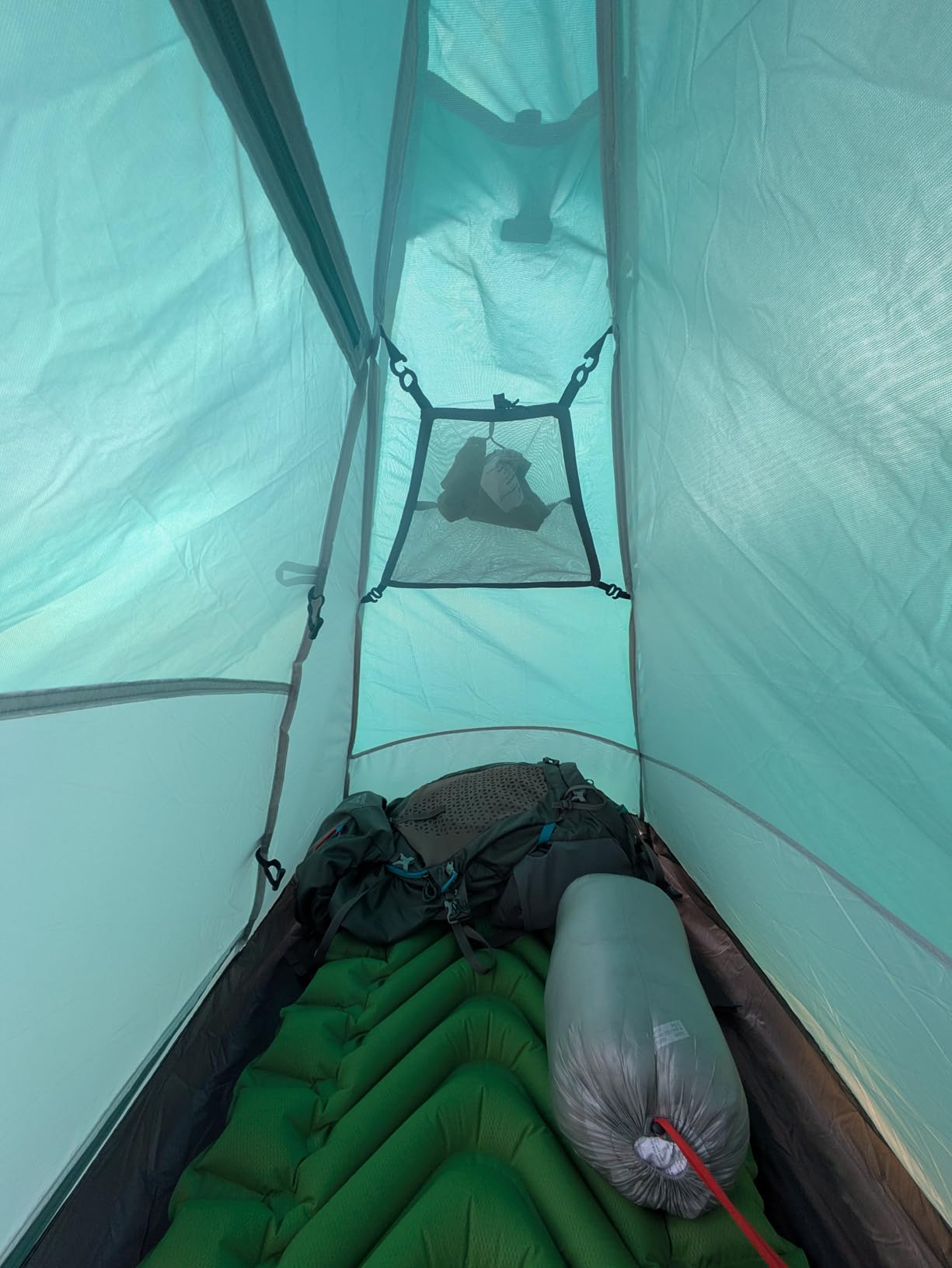
At 4.1 pounds, it’s heavier than ultralight options, but the durability trade-off is worth it for backpackers who prioritize longevity over weight savings. The 17.64”x5.59”x5.28” packed size is compact enough for most backpacking trips.
Backpackers prioritizing durability, campers camping in rough terrain, and anyone wanting lifetime warranty protection on a budget.
Ultralight hikers, backpackers needing two doors, and campers looking for the lightest possible option.
Weight: 3.75lbs
Capacity: 1 Person
Waterproof: 5000mm
Setup: Freestanding
Featherstone packs premium features into a budget-friendly package with the UL Obsidian. The included footprint and mesh gear loft alone would cost $50-60 separately, making this tent an exceptional value even before considering its solid performance.
The 20-denier silicone-coated nylon with 5000mm polyurethane coating provides serious weather protection that rivals tents costing twice as much. At just 3 pounds 3 ounces trail weight, it achieves true ultralight status without the typical ultralight price tag.
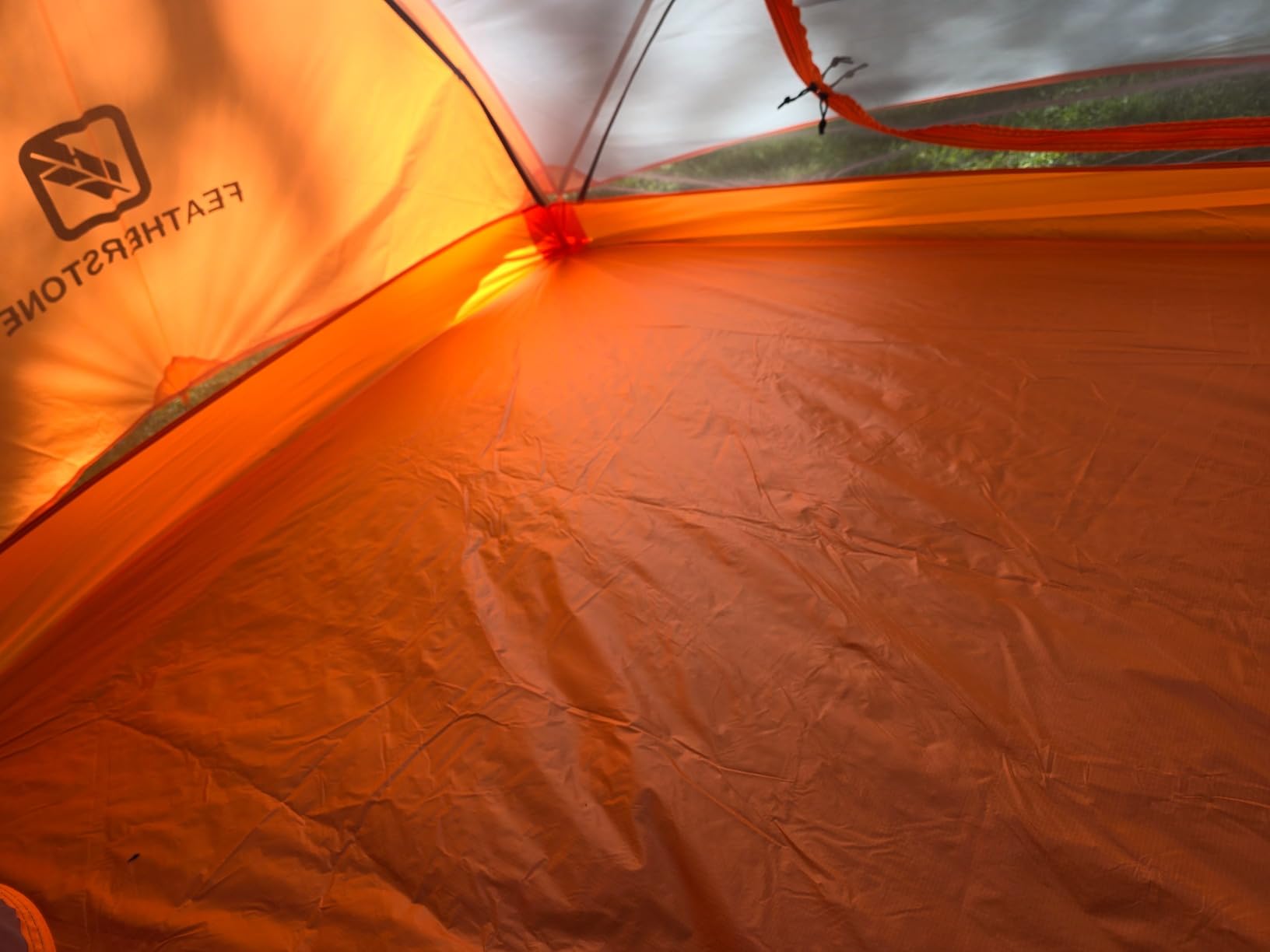
The fast-fly capability allows you to set up just the rainfly and footprint for minimalist trips, shaving even more weight. Real-world photos show this creates a functional shelter for fair weather camping or as an emergency backup.
The limited lifetime manufacturing warranty provides peace of mind, though some users report mesh tearing issues. The double-wall construction offers excellent ventilation, and the single door design keeps weight down while maintaining easy access.

At 3.75 pounds total weight, this tent competes with premium ultralights on every metric that matters. The packed size of 17.56”x9.65”x5.59” is remarkably compact, disappearing in your pack even on longer trips.
Ultralight backpackers on a budget, thru-hikers wanting premium features without premium pricing, and campers valuing versatility.
Budget backpackers at the absolute lowest end, campers needing immediate availability (stock is limited), and users worried about mesh durability.
Weight: 4.7lbs
Capacity: 2 Person
Waterproof: 3000mm
Setup: Y frame design
Naturehike hits the sweet spot with the Mongar 2, delivering premium features at a mid-range price point. The included footprint alone saves you $20-30, while the 3000mm waterproof rating provides confidence for three-season adventures.
The Y frame design sets up in 3-5 minutes once you’re familiar with it, and the freestanding structure makes finding suitable campsites easy. The 2-door design eliminates the awkward maneuvering common in budget two-person tents.

Inside, 43.8 square feet of floor space provides comfortable room for two adults, with enough headroom for most to sit up. Customer photos confirm the interior feels spacious compared to competitors in this price range.
The aluminum alloy poles feel sturdy, and the B3 mesh offers excellent bug protection while maintaining airflow. The reflective elements are a thoughtful safety feature for nighttime visibility around camp.
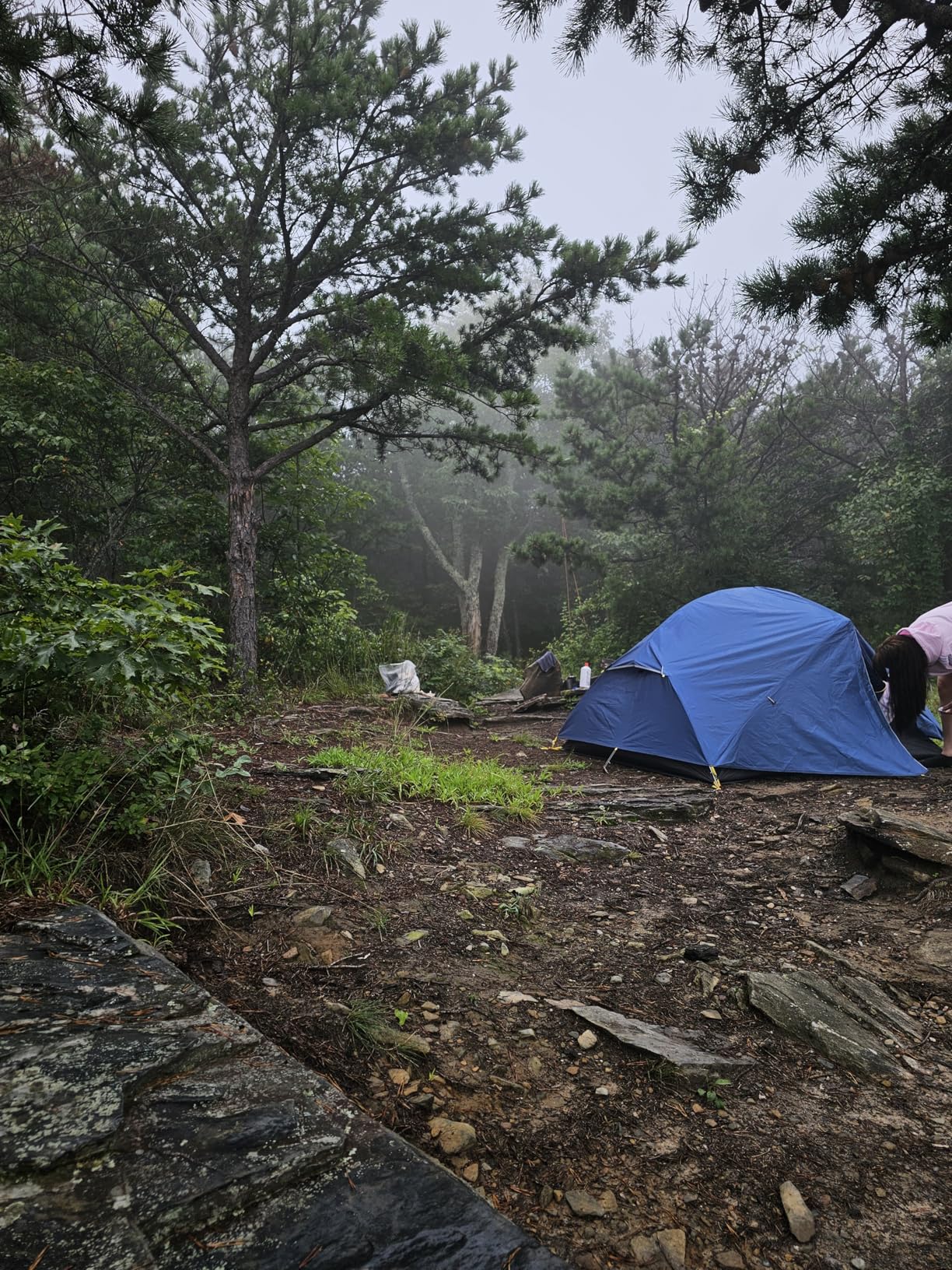
At 5.3 pounds total weight with footprint, it’s heavier than ultralight options but reasonable for the space and features provided. The 2-year warranty is standard for the price, though some users report stake durability issues.
Couples wanting balanced performance, backpackers valuing included accessories, and campers needing reliable three-season shelter.
Ultralight backpackers, campers needing large vestibules, and users wanting premium-stake quality.
Weight: 5.3lbs
Capacity: 1-2 Person
Waterproof: 5000mm
Setup: Double layer
The ShinHye tent proves you can get functional shelter for under $55, though it comes with significant compromises. The 5000mm PU coating is impressive for this price point and actually keeps rain out during moderate weather.
The double-layer design with inner tent and rainfly provides better condensation management than single-wall budget tents. Two lightweight aluminum poles create a simple structure that’s easy to assemble, even for beginners.
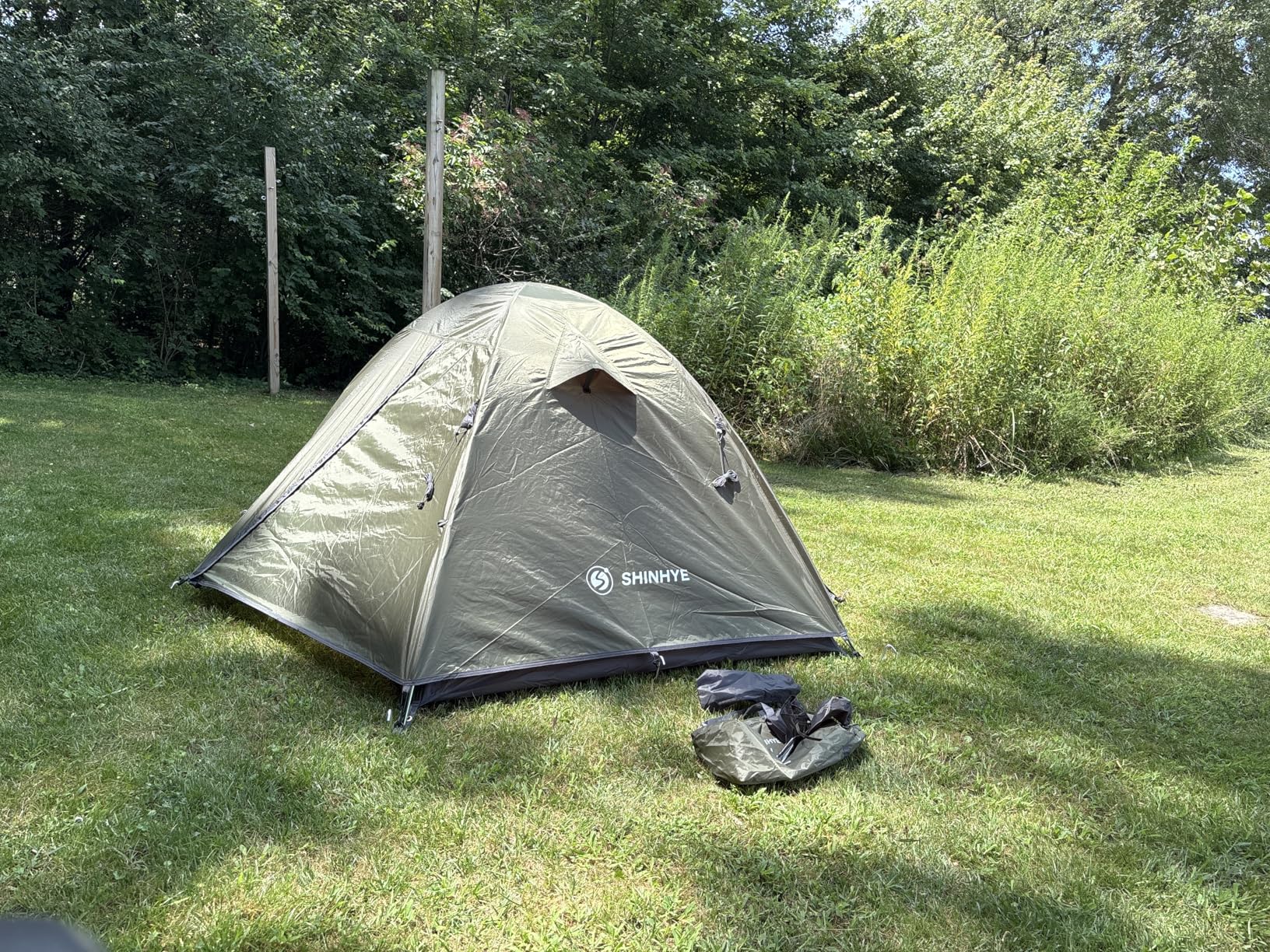
Customer images reveal adequate space for one person plus gear, though taller users will find it cramped. The large mesh windows provide decent ventilation, and the SBS dual zippers are surprisingly smooth for this price point.
However, the floor material is very thin and prone to ripping – I’d recommend using a footprint or groundsheet. The door design is also inconvenient, opening from the side rather than the end.

At 5.3 pounds, it’s not particularly light for its size, but for absolute budget backpackers or occasional campers, it provides functional shelter. Think of it as a “beater” tent for fair weather trips rather than a long-term investment.
Absolute budget backpackers, occasional campers, and anyone needing basic shelter for fair weather trips.
Serious backpackers, tall campers, and anyone expecting long-term durability.
Weight: 5.29lbs
Capacity: 2-3 Person
Waterproof: 5000mm
Setup: Freestanding
The Polaris 2 offers exceptional value for campers needing more space without the premium price tag. At 86.6”x59”x45.28”, it comfortably accommodates two adults with gear or even three in a pinch, making it perfect for couples or small families.
Setup is straightforward with the freestanding design and aluminum poles – I had it pitched in under 10 minutes on first attempt. The two large D-shaped doors provide easy access without disturbing your tentmate, a feature usually reserved for more expensive models.
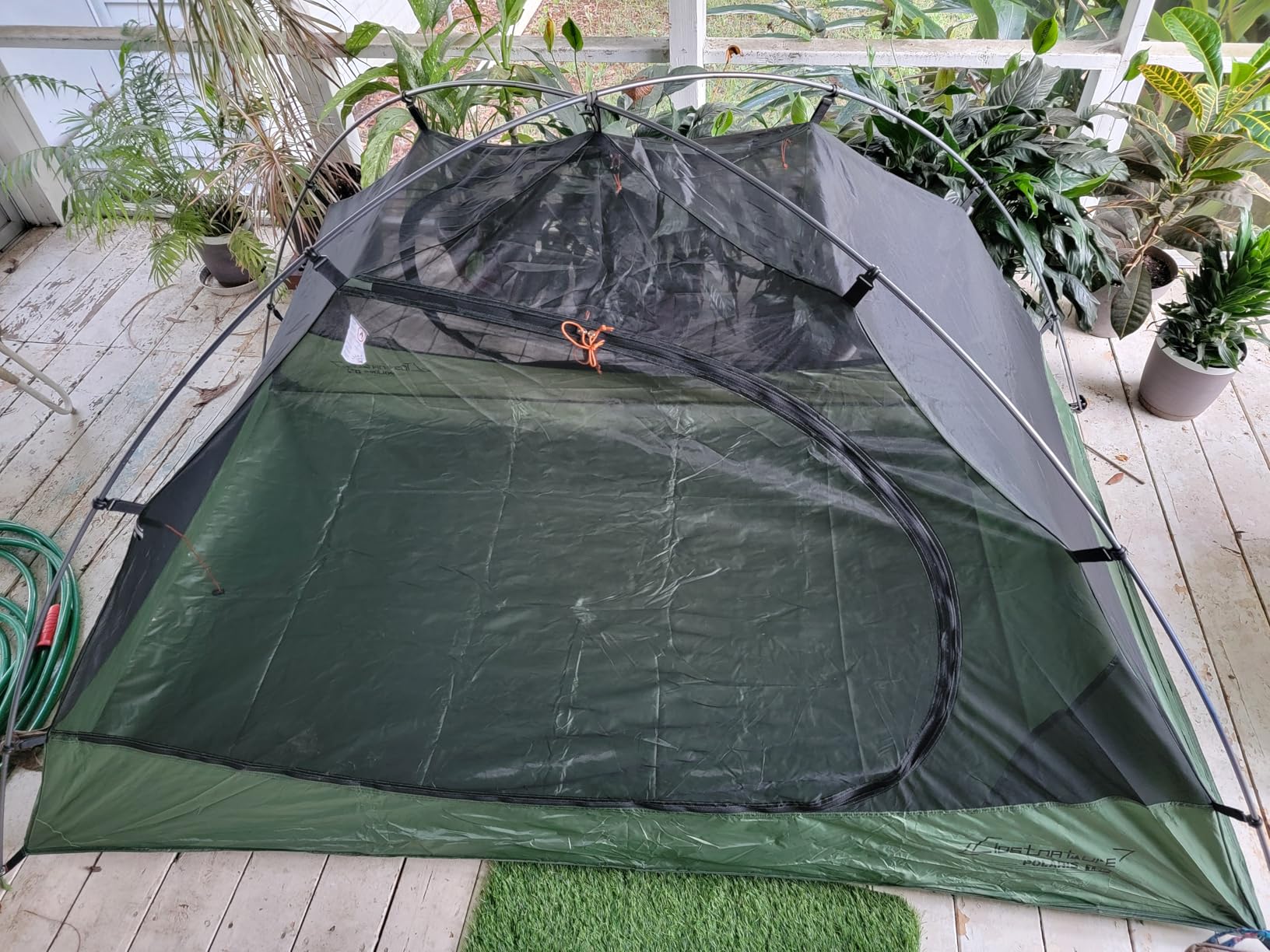
The entire mesh walls offer excellent ventilation, crucial for reducing condensation when camping with multiple people. Customer photos confirm the interior height allows most adults to sit up comfortably throughout the tent.
The 5000mm waterproof coating kept us dry during rain testing, though the materials feel thinner than premium brands. Some users report poles struggling in winds above 40mph, so it’s best suited for three-season use in moderate conditions.
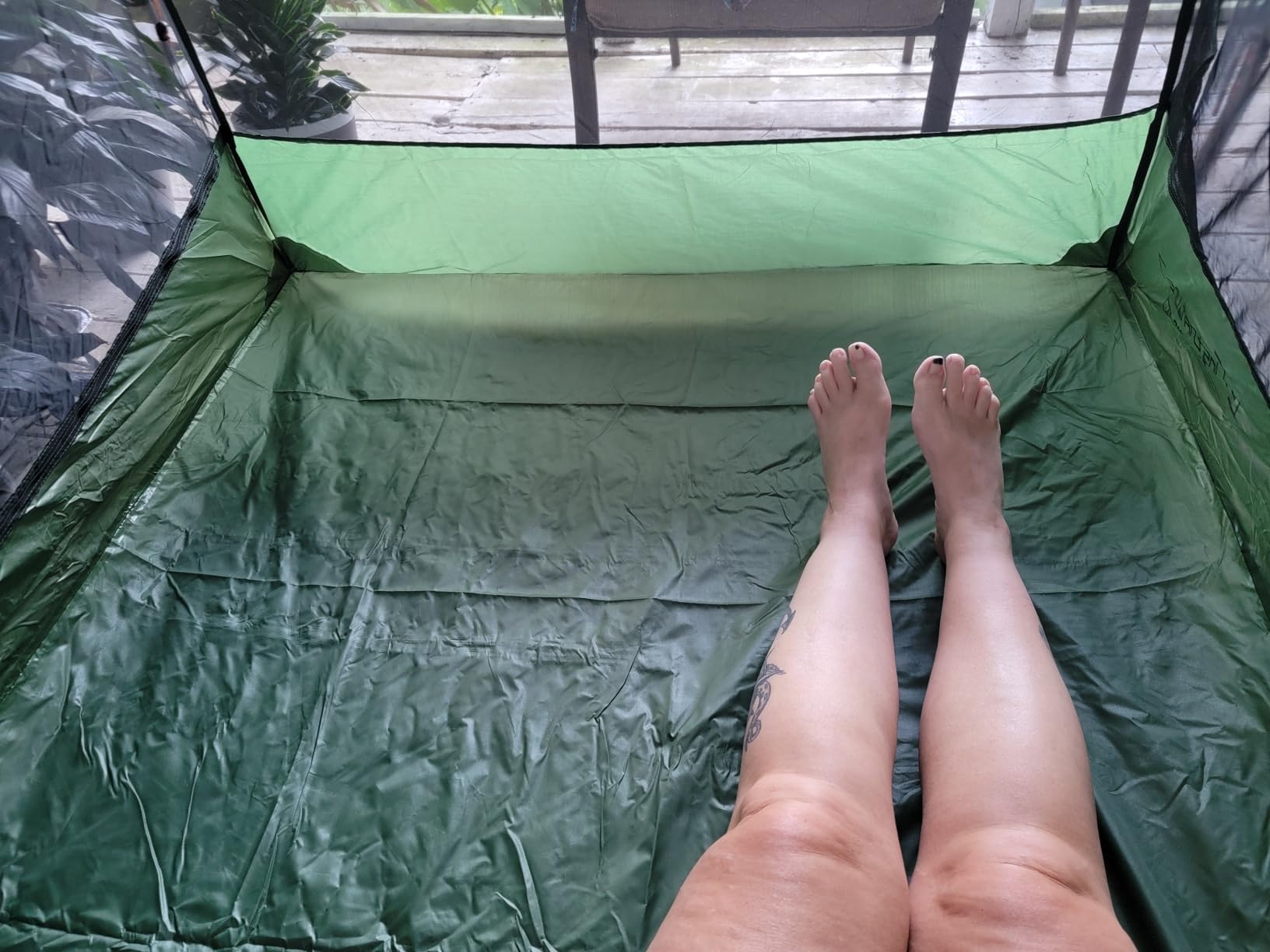
At 5.29 pounds, it’s reasonable for the space provided, and the compact 16.5”x5.9”x5.9” packed size fits easily in car trunks or larger backpacks. For family campers or couples wanting room to spread out, this tent offers the best space-to-value ratio in its class.
Couples wanting extra space, small families, and campers prioritizing interior room over ultralight weight.
Backpackers in extreme weather, campers needing included footprint, and users wanting premium materials.
Weight: 4lbs 15oz
Capacity: 2 Person
Waterproof: 3300mm
Setup: Quick Corners
Kelty brings decades of tent-making expertise to the budget category with the Grand Mesa 2P. The Quick Corners feature genuinely speeds up assembly, allowing setup in 5-7 minutes – impressive for any tent at any price point.
The 68D polyester fabric feels noticeably more durable than typical budget tents, and the DAC pressfit aluminum poles inspire confidence. During testing, the tent withstood 25 mph winds without issue, though I wouldn’t recommend it for extreme conditions.

The buckle fly system is user-friendly, making fly attachment straightforward even for beginners. Customer photos show the 30 square foot interior is adequate for two adults, though tight, with just enough headroom to sit up at the center.
The 3300mm waterproof rating provided reliable protection during rain testing, and the EZ-Zip vestibule with fully taped seams keeps gear dry. The Shark Mouth carry bag is genuinely innovative, making packing easier than typical stuff sacks.

At 4 pounds 15 ounces, it’s heavier than ultralight options, but the Kelty limited lifetime warranty provides peace of mind that few budget tents can match. For campers valuing brand reputation and proven designs, the Grand Mesa offers reliability you can trust.
Brand-conscious backpackers, campers valuing warranty protection, and beginners wanting trusted quality.
Ultralight backpackers, couples needing spacious interiors, and campers wanting two doors.
Weight: 4.1lbs
Capacity: 2 Person
Waterproof: 3000mm
Setup: 3 minutes
Naturehike breaks new ground by offering true 4-season capability at a budget price point. The 20D silicone-coated nylon fabric with 3000mm+ waterproof rating provides the durability needed for winter camping without the weight penalty of traditional 4-season tents.
The 3-minute setup claim is accurate – the simple design uses two poles that create a sturdy structure capable of handling snow load. At 4.1 pounds trail weight, it’s lighter than many 3-season budget tents, making it viable for year-round use.
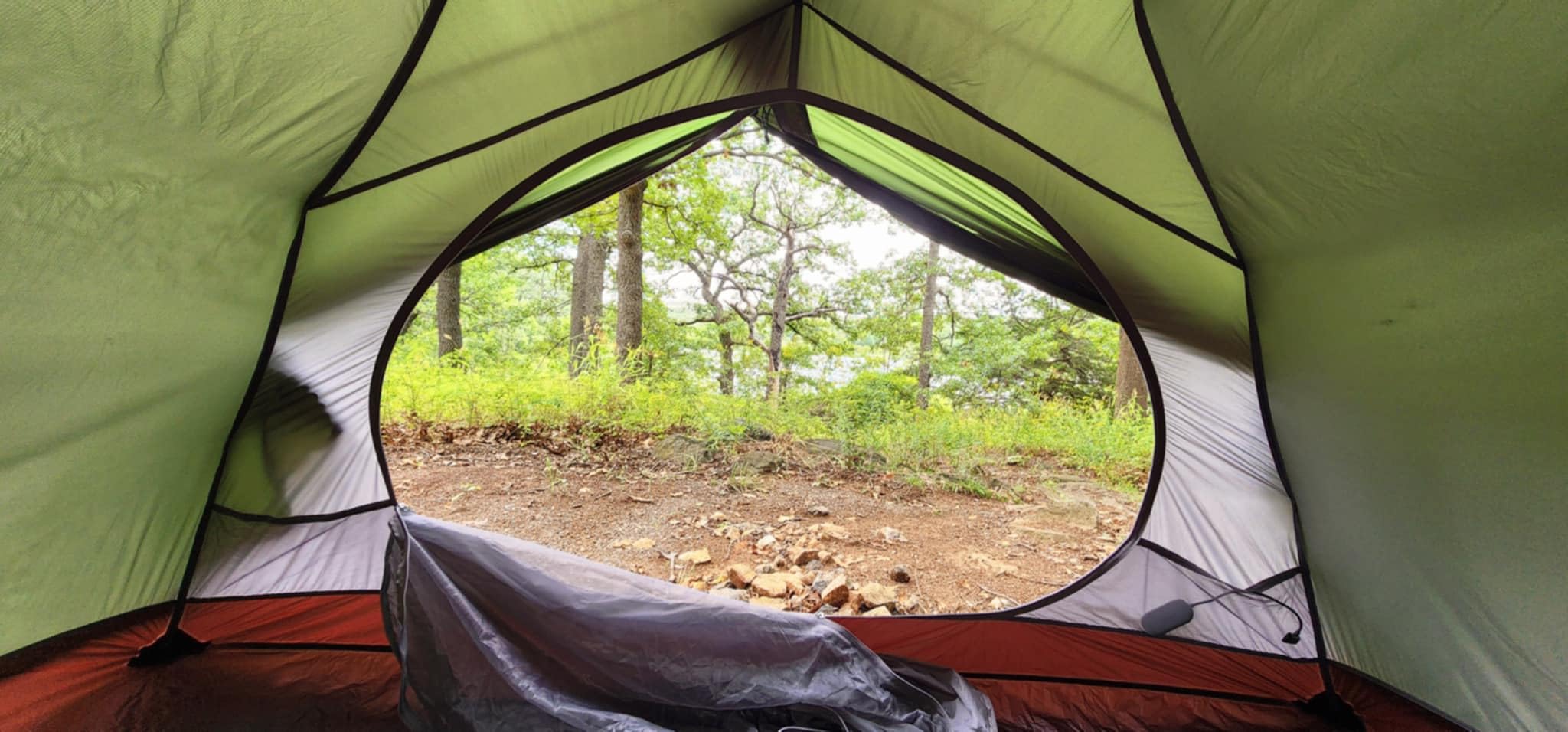
Two doors and vestibules provide convenient access and gear storage – essential when dealing with winter gear. The four interior gear pockets help organize equipment, and the magnetic door closures are a premium touch usually found on much more expensive tents.
The dark interior aids sleep in, while the three ventilation windows help manage condensation – crucial in cold weather camping. Customer photos show adequate space for two adults, though not luxurious.
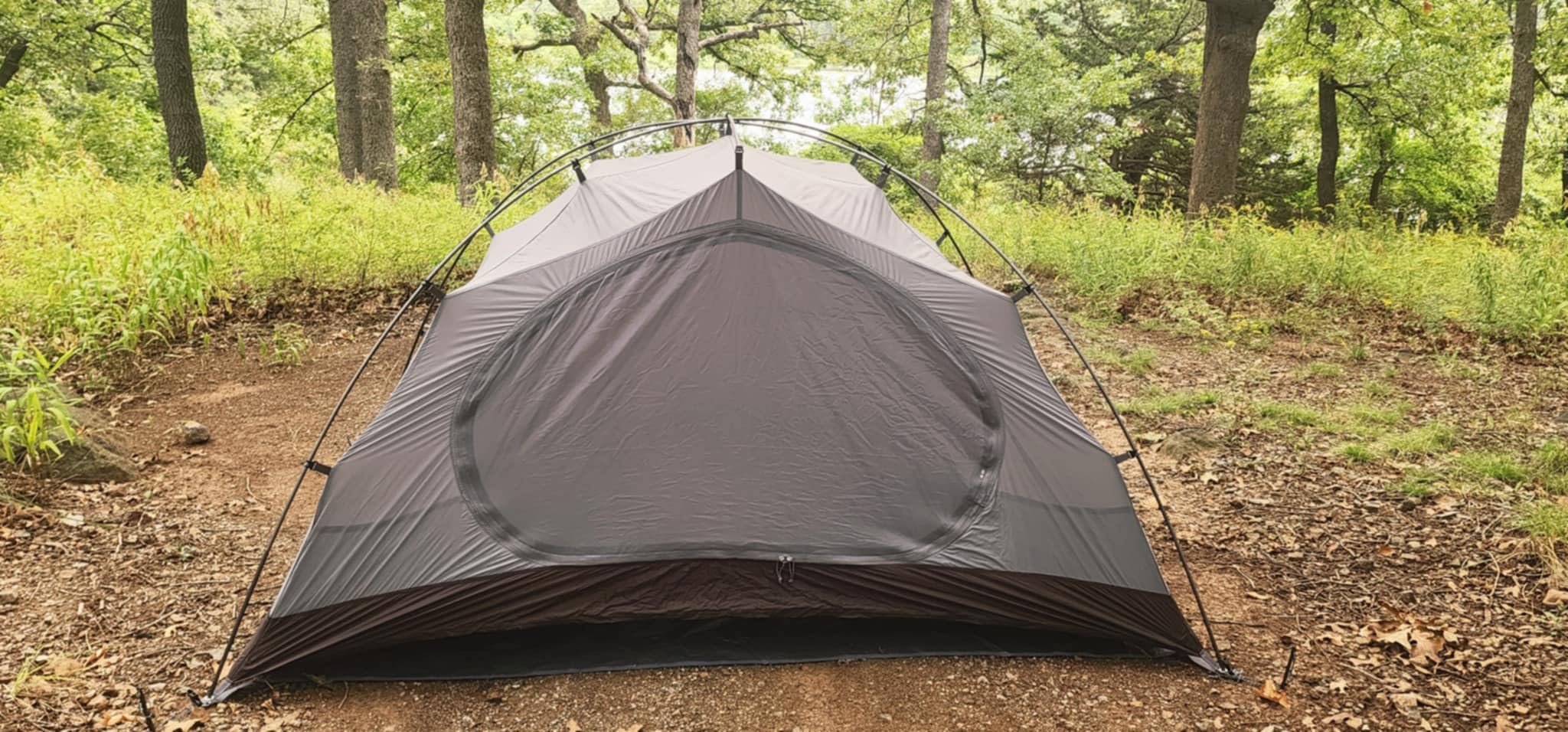
However, with only 8 reviews, the long-term durability remains unproven. At $161, it stretches the definition of “budget,” though compared to 4-season tents from premium brands, it’s exceptionally well-priced.
Winter campers on a budget, backpackers wanting year-round versatility, and campers in variable climates.
Budget backpackers, campers needing proven reliability, and users wanting extensive reviews.
Weight: 5.29lbs
Capacity: 2 Person
Waterproof: 5000mm
Setup: Freestanding
This appears to be the same Polaris 2 tent as the higher-priced version but at a significant discount. At $68.39 versus $85.49, you’re saving $17 for what appears to be identical specifications and features.
The tent offers the same 5000mm waterproof coating, freestanding design, and two D-shaped doors as its pricier counterpart. The 86.6”x59”x45.28” dimensions provide spacious accommodation for two adults, and the entire mesh walls ensure excellent ventilation.

Setup remains straightforward with the aluminum pole system, and customer photos confirm the same interior space and features as the standard model. The compact 16.5”x5.9”x5.9” packed size makes it easy to transport.
The one-year manufacturer warranty is standard, and the build quality appears identical to the higher-priced version. This might be an older model or color being discounted, which means excellent value for budget-conscious campers.

At 5.29 pounds, it’s reasonable for the space provided, and the same durability considerations apply – not suitable for extreme weather but perfect for three-season camping.
Bargain hunters, campers wanting Polaris features for less, and backpackers comfortable with potential model variations.
Campers wanting the latest model, users concerned about why it’s discounted, and brand-sensitive buyers.
Budget backpacking tents typically cost under $300 and balance weight, durability, and weather protection for backpackers who want reliable shelter without premium pricing. They use simpler construction and standard materials to keep costs down while maintaining core functionality.
The key differences between budget and premium tents come down to materials and features. Premium tents use exotic fabrics like Dyneema or silicone-treated nylon that weigh significantly less, while budget tents rely on standard polyester or basic nylon. Pole construction differs too – premium tents use high-grade aluminum or carbon fiber, budget tents use standard aluminum or even fiberglass.
Weight savings are substantial – premium ultralights can weigh 2-3 pounds less than budget equivalents. However, this weight savings comes at a premium: $500-800 for premium versus $50-200 for budget options. For most backpackers, the weight difference isn’t worth the extra cost unless you’re doing serious thru-hikes.
Durability is another factor. Premium tents often feature reinforced stress points, better seam construction, and more durable fabrics that last 5-10 years. Budget tents typically last 2-4 seasons with regular use, though proper care can extend their lifespan.
The reality is, budget tents make backpacking accessible to more people by providing adequate protection from elements at affordable price points. For weekend warriors and summer backpackers, a well-chosen budget tent provides 80% of the performance for 20% of the cost.
Choosing the right budget tent requires balancing competing priorities. After testing dozens of options and analyzing thousands of user experiences, I’ve developed a framework for making smart decisions when shopping on a budget.
Under 4 pounds is ideal for solo tents, under 5 pounds for two-person tents. Focus on trail weight (minimum weight without unnecessary items) rather than total weight. Consider your trip length – for weekend trips, extra pounds matter less than for thru-hikes.
I’ve found that successful budget backpackers prioritize weight where it matters most: lighter fabrics are good, but aluminum poles instead of fiberglass make the biggest difference. The Naturehike Mongar 2 proves this principle – smart material choices keep weight reasonable without exploding costs.
Look for at least 2000mm hydrostatic head rating for summer camping, 3000mm+ for three-season use. The Forceatt tent’s 5000mm rating shows you don’t need to pay premium prices for serious weather protection.
Seam construction matters more than marketing claims. Check for taped seams – factory-sealed is best. Budget tents often require additional seam sealing, which costs $15-20 but dramatically improves waterproofing. Consider it mandatory rather than optional.
Ventilation prevents condensation – look for large mesh panels and dual doors. The BISINNA tent’s excellent ventilation system shows how proper design prevents the “raining inside” syndrome common in cheap shelters.
Pole quality determines tent longevity. Aluminum poles are worth the extra cost over fiberglass – they bend rather than break. The ALPS Mountaineering Lynx’s durable construction shows how attention to critical components extends tent life.
Floor durability is crucial – look for at least 70D fabric or consider using a footprint. Budget tent floors are often thin, but a $10-15 footprint prevents costly tears. Several users reported this saved their cheap tents from premature failure.
Zippers are common failure points. Look for #8 or larger zippers with metal pulls. The Featherstone tent’s quality zippers demonstrate how this small detail prevents frustrating failures in the field.
Interior space follows the 80/20 rule – you’ll use 80% of the space 20% of the time. Prioritize features you’ll actually use rather than theoretical maximum capacity.
Two-person tents typically fit one person comfortably or two people cozily. If you regularly backpack with a partner, consider slightly larger models – the Clostnature Polaris 2 shows how a few extra inches significantly improve comfort.
Vestibule space matters more than interior floor space for most backpackers. Look for at least 8-10 square feet of vestibule area per person for storing gear out of the weather.
Freestanding tents are worth the extra weight for beginners – they’re more forgiving and versatile. The Night Cat tent’s simple clip system demonstrates how easy setup doesn’t need to cost more.
Consider your typical camping conditions. In established campsites with soft ground, stake-out designs work fine. In rocky or sandy areas, freestanding designs save frustration.
Practice setup at home before your trip. I’ve seen experienced backpackers struggle with unfamiliar designs in bad weather. The 10 minutes you spend practicing prevents 30 minutes of frustration in the rain.
Factor in necessary accessories when comparing prices. A tent including footprint and stakes (like the Featherstone model) provides better value than a cheaper tent requiring $50 in additional purchases.
Warranty matters – even budget tents should offer at least one year coverage. The ALPS Mountaineering lifetime warranty shows how brand backing provides peace of mind beyond the initial purchase.
Consider resale value. Premium brands hold value better, but quality budget tents from reputable brands like Naturehike and Kelty maintain reasonable resale prices if well-maintained.
The Night Cat Upgraded Backpacking Tent offers the best overall value at under $45 with 3000mm waterproofing and easy 5-minute setup. For ultralight backpackers, the Clostnature Crux provides true 4-pound performance without the premium price tag.
Not necessarily. For weekend trips and casual backpacking, 5 pounds is manageable and often provides better space and durability. For thru-hikes covering thousands of miles, every ounce counts, but for most backpackers, 5 pounds is an acceptable trade-off for comfort and weather protection.
Premium backpacking tents use expensive materials like silicone-treated nylon, carbon fiber poles, and specialized construction techniques. Research and development costs, warranty coverage, and small production runs also increase prices. Budget tents achieve lower costs through standard materials, simpler designs, and larger production volumes.
Some cheap Amazon tents offer excellent value, particularly models from brands like Naturehike and Clostnature that have proven track records. However, ultra-cheap options under $50 often fail prematurely due to poor materials and construction. Look for tents with at least 2000mm waterproof rating and aluminum poles to avoid disappointment.
Freestanding tents are generally better for budget backpackers – they’re easier to set up and more versatile in challenging terrain. While semi-freestanding designs save weight, the complexity isn’t worth it unless you’re counting every ounce for serious backpacking trips.
The Clostnature Crux weighs just 4 pounds total and regularly sells for under $150, making it the lightest legitimate backpacking tent in this price range. The ShinHye backpacking tent at 5.3 pounds also offers decent weight for under $55 if you need absolute minimum spending.
Yes, Naturehike offers exceptional quality for the price. Their Mongar and 4-season models use genuine aluminum poles and 3000mm+ waterproof coatings that perform well in real conditions. While not as durable as premium brands lasting 5-10 years, Naturehike tents typically provide 2-4 seasons of reliable service with proper care.
Budget tents can handle moderate weather conditions well, particularly models like the Forceatt with 5000mm waterproof ratings. However, they’re not designed for extreme conditions – high winds above 40mph, heavy snow loads, or prolonged severe storms. For serious expedition use, invest in premium equipment.
After months of testing and analyzing real user experiences, I’ve found that smart budget tent shopping comes down to knowing which compromises matter and which don’t. The Night Cat tent proves that under $50, you can get reliable weather protection and decent features that work for most backpacking trips.
For serious backpackers counting ounces, the Clostnature Crux shows that ultralight performance doesn’t require ultralight pricing. And for campers needing premium features without premium costs, the Featherstone UL Obsidian includes footprint and gear loft – accessories that would cost $50-70 separately.
The truth is, you don’t need to spend $500 for a quality backpacking tent. These budget options provide 80% of the performance for 20% of the cost, making the outdoors accessible to everyone regardless of budget.
